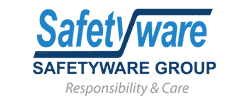Welcome to our FAQ page, where we’ve compiled answers to the most commonly asked questions about our products, services, and company policies. Whether you’re a new visitor looking to learn more about us, a returning customer with specific inquiries, or someone needing assistance with a particular issue, this page is designed to provide you with quick and clear answers. If you don’t find the information you’re looking for, please feel free to reach out to our support team, who are always ready to assist you.
Frequently Asked Questions (FAQ)
Eye & Face Protection
Yes, our safety glasses and safety goggles comply with ANSI Z87 standards and are approved by SIRIM-DOSH in Malaysia.
Yes, many of our safety glasses feature anti-fog coatings to ensure clear vision in humid or temperature-changing environments.
Look for features such as anti-fog coatings, scratch-resistant lenses, UV protection, adjustable straps, and comfortable padding. For specific applications, consider additional features like chemical resistance for goggles or flip-up visors for face shields.
Face shields should be used in combination with safety goggles or glasses to ensure complete eye protection in high-risk environments.
Yes, our safety glasses come with UV protection to shield your eyes from harmful ultraviolet rays, making them suitable for outdoor and welding applications.
Select eye protection based on your workplace hazards, such as impact, chemical splashes, dust, or UV exposure. Safetyware offers a variety of products to suit different environments.
Safety glasses provide basic protection against impact and particles. Goggles offer a higher level of protection against chemical splashes and airborne hazards. Face shields provide the most comprehensive protection for the face and eyes.
Use mild soap and water or specialized lens cleaning wipes. Avoid using harsh chemicals or abrasives that could damage the lenses.
Safety glasses are commonly used in construction, woodworking, and general industrial settings. Goggles are preferred in laboratories, chemical handling, and healthcare environments. Face shields are often used in welding, metalworking, and situations with high-risk of impact or splashes.
The ANSI/ISEA Z87.1-2020 standard establishes requirements for the design, testing, performance, and labeling of eye protection products to ensure they offer adequate protection against workplace hazards. Compliance with this standard is crucial for ensuring the safety and well-being of workers.
Safety glasses protect the eyes from direct impact, while safety goggles provide a sealed protection against dust, chemicals, and debris.
Product Information
Yes, our safety glasses and safety goggles comply with ANSI Z87 standards and are approved by SIRIM-DOSH in Malaysia.
Yes, many of our safety glasses feature anti-fog coatings to ensure clear vision in humid or temperature-changing environments.
Look for features such as anti-fog coatings, scratch-resistant lenses, UV protection, adjustable straps, and comfortable padding. For specific applications, consider additional features like chemical resistance for goggles or flip-up visors for face shields.
Face shields should be used in combination with safety goggles or glasses to ensure complete eye protection in high-risk environments.
Yes, our safety glasses come with UV protection to shield your eyes from harmful ultraviolet rays, making them suitable for outdoor and welding applications.
Select eye protection based on your workplace hazards, such as impact, chemical splashes, dust, or UV exposure. Safetyware offers a variety of products to suit different environments.
Safety glasses provide basic protection against impact and particles. Goggles offer a higher level of protection against chemical splashes and airborne hazards. Face shields provide the most comprehensive protection for the face and eyes.
Use mild soap and water or specialized lens cleaning wipes. Avoid using harsh chemicals or abrasives that could damage the lenses.
Safety glasses are commonly used in construction, woodworking, and general industrial settings. Goggles are preferred in laboratories, chemical handling, and healthcare environments. Face shields are often used in welding, metalworking, and situations with high-risk of impact or splashes.
The ANSI/ISEA Z87.1-2020 standard establishes requirements for the design, testing, performance, and labeling of eye protection products to ensure they offer adequate protection against workplace hazards. Compliance with this standard is crucial for ensuring the safety and well-being of workers.
Safety glasses protect the eyes from direct impact, while safety goggles provide a sealed protection against dust, chemicals, and debris.
Safety Glasses
Yes, our safety glasses and safety goggles comply with ANSI Z87 standards and are approved by SIRIM-DOSH in Malaysia.
Technical Support
Yes, many of our safety glasses feature anti-fog coatings to ensure clear vision in humid or temperature-changing environments.
Look for features such as anti-fog coatings, scratch-resistant lenses, UV protection, adjustable straps, and comfortable padding. For specific applications, consider additional features like chemical resistance for goggles or flip-up visors for face shields.
Face shields should be used in combination with safety goggles or glasses to ensure complete eye protection in high-risk environments.
Yes, our safety glasses come with UV protection to shield your eyes from harmful ultraviolet rays, making them suitable for outdoor and welding applications.
Select eye protection based on your workplace hazards, such as impact, chemical splashes, dust, or UV exposure. Safetyware offers a variety of products to suit different environments.
Safety glasses provide basic protection against impact and particles. Goggles offer a higher level of protection against chemical splashes and airborne hazards. Face shields provide the most comprehensive protection for the face and eyes.
Use mild soap and water or specialized lens cleaning wipes. Avoid using harsh chemicals or abrasives that could damage the lenses.
Safety glasses are commonly used in construction, woodworking, and general industrial settings. Goggles are preferred in laboratories, chemical handling, and healthcare environments. Face shields are often used in welding, metalworking, and situations with high-risk of impact or splashes.
The ANSI/ISEA Z87.1-2020 standard establishes requirements for the design, testing, performance, and labeling of eye protection products to ensure they offer adequate protection against workplace hazards. Compliance with this standard is crucial for ensuring the safety and well-being of workers.
Safety glasses protect the eyes from direct impact, while safety goggles provide a sealed protection against dust, chemicals, and debris.
